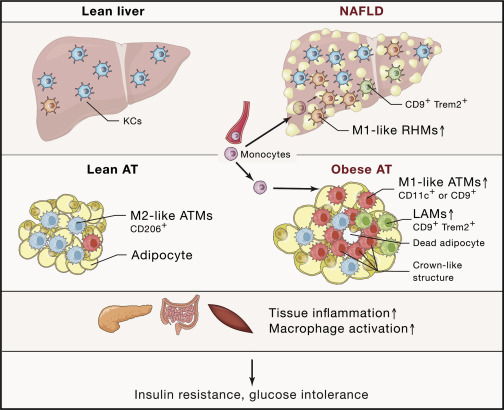
emerging — one that recognizes the interplay between the brain and metabolic regulation. This shift in perspective may pave the way for innovative strategies to combat diabetes, targeting the underlying neurological mechanisms rather than exclusively focusing on behavioral modifications or weight loss.
New Insight: Active Brain Cells Influence High Blood Sugar Levels in Diabetes – A Transformational Understanding of the Condition
In a revolutionary discovery, scientists have pinpointed a particular set of hyperactive brain cells as significant factors in heightened blood sugar levels seen in type 2 diabetes — altering the established scientific perception of this prevalent illness. The study, released on May 15 in the Journal of Clinical Investigation, indicates that certain neurons situated in the hypothalamus, referred to as AgRP neurons, are pivotal in glucose regulation, irrespective of dietary habits or body weight.
Carried out by researchers at the University of Washington, the investigation involving diabetic mice revealed that deactivating these brain cells resulted in normalized blood sugar levels for prolonged periods without impacting body weight or dietary intake. This finding paves the way for innovative therapeutic approaches targeting the brain for diabetes management, with the potential to aid millions worldwide.
Reassessing Diabetes: A Brain-Centric Cause?
Historically, type 2 diabetes has been recognized as a peripheral metabolic condition stemming from insulin resistance in body tissues like the liver and muscles — usually instigated by an excess of body fat and a lack of physical activity. The influence of the brain has been traditionally regarded as minimal, but this perspective is quickly changing.
Dr. Michael Schwartz, an endocrinologist from UW Medicine and the study’s senior author, comments that this new research “challenges traditional beliefs regarding the origins of diabetes,” placing critical emphasis on the central nervous system — especially the hypothalamus — as a pivotal regulator of blood glucose levels.
The study concentrates on Agouti-related peptide (AgRP) neurons found in the arcuate nucleus of the hypothalamus. While these neurons are recognized for their roles in hunger regulation and energy homeostasis, recent evidence implies they also significantly contribute to glucose metabolism, especially in diabetes scenarios.
Main Discoveries: Inhibiting a Sugar Signal
During the research, the team employed a modified virus to introduce a silencing agent — derived from tetanus toxin — directly to the AgRP neurons in diabetic, overweight mice. This agent inhibits the neurons’ ability to communicate while leaving them intact.
Within merely a week of this intervention, blood glucose measurements in the treated mice decreased from over 200 mg/dL (a level indicative of diabetes) to around 140 mg/dL, classified within the healthy range. Notably, this normalization was sustained throughout the 10-week study without altering the subjects’ weight, food intake, or energy levels.
Additional physiological changes observed were:
– A considerable reduction in plasma insulin levels, reflecting improved insulin sensitivity.
– Increased liver glycogen levels, indicating enhanced capacity for glucose storage.
– Diminished corticosterone (which is analogous to cortisol in rodents), often elevated in diabetes cases.
– Heightened plasma lactate, possibly signifying more significant glucose utilization in the liver.
Crucially, there was no alteration in liver fat accumulation or the expression of genes associated with gluconeogenesis (the liver’s glucose production process). This suggests a completely new approach to glycemic regulation — one that circumvents conventional metabolic pathways.
Separation of Diabetes from Obesity
A profoundly significant conclusion from this research is the idea that blood sugar levels can be regulated independently of body fat percentage — a revelation that contradicts long-held beliefs regarding the necessity of weight loss in effectively managing type 2 diabetes.
“While these neurons are crucial for managing blood sugar in diabetes, they do not significantly contribute to causing obesity in these mice,” the study authors indicated in their published findings. This separation implies that the neural networks responsible for glucose management and appetite control might be more distinct than previously assumed.
This perspective could clarify why certain antidiabetic medications — like GLP-1 receptor agonists — remain effective even in patients who do not undergo notable weight loss.
Brain-Focused Therapies on the Horizon?
Could this insight lead to new treatments for humans? Though the current findings are limited to mice, they resonate with mechanisms associated with some existing diabetes medications. For example, drugs like Ozempic and Wegovy, both GLP-1 receptor agonists, are recognized to diminish AgRP neuron activity, although the precise extent of their action on these neurons remains under examination.
Dr. Schwartz highlights this connection as a possible explanation for the way these medications enhance blood sugar regulation independent of significant weight fluctuations.
Looking ahead, researchers foresee the emergence of a new category of treatments aimed specifically at targeting overactive AgRP neurons or their signaling pathways — potentially employing small molecules, gene therapy, or neuromodulation techniques. However, comprehensive clinical trials will be necessary before such interventions can be adapted safely and effectively for human use.
A Fresh Perspective on Diabetes Understanding
This investigation adds to a growing body of evidence emphasizing the crucial role the brain plays in overall metabolic function. By illuminating how central nervous system circuits influence glucose management, researchers are advocating for a re-examination of how we define, diagnose, and treat type 2 diabetes.
Instead of perceiving it merely as a peripheral illness driven by lifestyle factors, a more sophisticated understanding is developing — one that acknowledges the connection between the brain and metabolic regulation. This evolving perspective may lead to groundbreaking strategies in the fight against diabetes, focusing on the fundamental neurological mechanisms rather than solely on lifestyle changes or weight management.